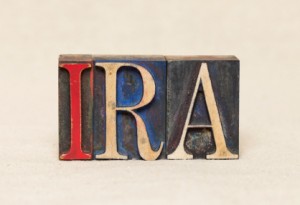 If you talk to enough people about making a living trust the beneficiary of an IRA, you will get a lot of strange looks. They’ll say: “Oh…. you should NEVER do that.” It is possible to make a living trust the beneficiary of an IRA. It’s really not an exotic, edgy move. But you do have to be careful.
If you talk to enough people about making a living trust the beneficiary of an IRA, you will get a lot of strange looks. They’ll say: “Oh…. you should NEVER do that.” It is possible to make a living trust the beneficiary of an IRA. It’s really not an exotic, edgy move. But you do have to be careful.
First, if a client’s kids are adults and the client’s kids are reasonably mentally and financially competent, then 98% of the time we just make them direct beneficiaries of the IRA. But there are times you might want a living trust as beneficiary, for instance:
1. If you have minor kids (under 18)
2. If a beneficiary of the trust is on social security disability or is disabled.
3. The beneficiary is a financial maniac or spendthrift.
To name a trust as beneficiary of an IRA, the trust must meet the IRS trust rules. If not, the trust will have to withdraw all of the funds from the IRA within 5 years from the date of the IRA owner’s death. Since the whole point of an IRA is to defer income tax, it’s important to meet the trust rules, so that the IRA withdrawals can be spread over the life expectancy of the beneficiary. Good news: Almost all trusts that have no charitable beneficiaries meet the IRS trust rules. I am not going to bore you with these. Read more here if you are an absolute masochist and want to know more about the trust rules.
The wrong way to name a trust as IRA beneficiary
It does matter how one words the beneficiary form if you a going to make a trust the beneficiary. The lazy, easy way is just to name “Suzie Glutz Living Trust dated January 1, 2014” as 100% beneficiary. Then, on her death, the IRA will go to the trustee of the trust and the trustee can take distributions from the IRA over the lifetime of the oldest beneficiary. The trustee, in turn pays out the IRA distributions from the trust to the beneficiaries or the trustee holds the distributions in the trust. The IRA has to be held as one big chunk, not as separate accounts for each beneficiary.
There are problems with this. The poor trustee will have to leave the trust open for years and will have to file trust tax returns for years. Beneficiaries don’t really like their funds commingled with other beneficiaries. They want their money now, damn it, and they don’t like it tied up with some trustee for years and worse yet, commingled with the other beneficiaries.
Let’s say you did a lazy, generic trust beneficiary designation like “Suzie Glutz Trustee of Suzie Glutz Living trust dated January 1, 2014” and the beneficiaries are rock, solid adults who don’t want the IRA held in trust. Some IRA custodians will let you distribute the IRA from the trust to the individuals even if there was a lazy IRA beneficiary designation. This satisfies the beneficiaries because they have their own account. I have done this with Schwab, Vanguard, Fidelity and Edward Jones. However, some IRA custodians will balk at this and then you are stuck leaving the trust open for years or just tanking the IRA withdrawing all the funds from it and paying taxes on it.
The right way to name a trust as IRA beneficiary
The foolproof way to set up the IRA beneficiary designation is to specifically describe each share in the beneficiary designation form. So instead of just writing “Suzie Glutz Living Trust” 100% on the the form, you would say this (assuming Suzie had two kids who were equal beneficiaries of the trust):
1. Separate share of Jane Glutz under Suzie Glutz Living Trust, 50%
2. Separate share of Pete Glutz under Suzie Glutz Living Trust 50%
If you fill out the beneficiary form this way, each child can have a separate share paid out over each child’s life expectancy. There is no danger of time-bombing the IRA and causing fast withdrawals over 5 years. Also, it will be much easier to convince the IRA custodian to distribute it out of the trust to the individual beneficiary if the trustee thinks that would be better.